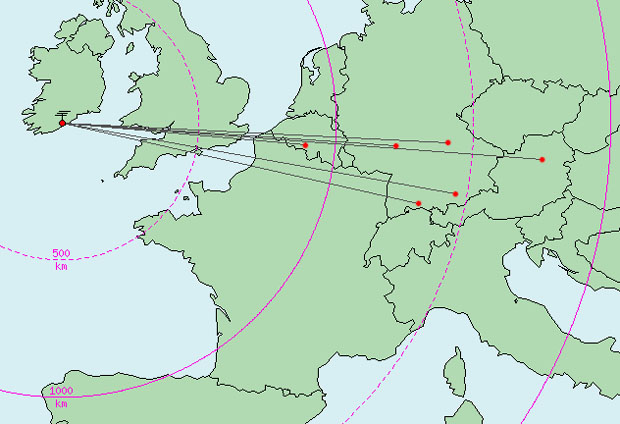Thursday the 7th of May 2020 was a good example of how unexpected Sporadic-E propagation can be on the 28 MHz band and above.
The FT8 frequency on 28 MHz was pretty quiet for most of the day with only weak signals heard. In the evening however, the band opened up with some very strong signals.
The map above shows the beacons heard and as you can see, the footprint is long in the East-West direction and narrow North-South.
These are the beacons heard...
EI7GL DK0TEN/B 28257.8 IO51TU<ES>JN47NT 1924z 07 May (Germany)
EI7GL OE3XAC/B 28188 IO51TU<ES>JN78SB 1922z 07 May (Austria)
EI7GL DB0ANN/B 28265 IO51TU<ES>JN59PL 1919z 07 May (Germany)
EI7GL DB0FKS/B 28210.7 IO51TU<ES>JN49IT 1915z 07 May (Germany)
EI7GL ON0RY/B 28207.1 IO51TU<ES>JO20CK 1914z 07 May (Belgium)
EI7GL DL0IGI/B 28205 IO51TU<ES>JN57MT 1913z 07 May (Germany)
The unusual ones were ON0RY/B (5-watts) in Begium because at 900kms, it's a sign of short skip and a high MUF (Maximum Usable Frequency). This was indeed the case as 50 MHz was also open and the MUF reached as high as 88 MHz as well.
DB0FKS/B runs just 1-watt into a DV27 vertical (mobile whip) so conditions need to be really good for it to be heard.

No comments:
Post a Comment